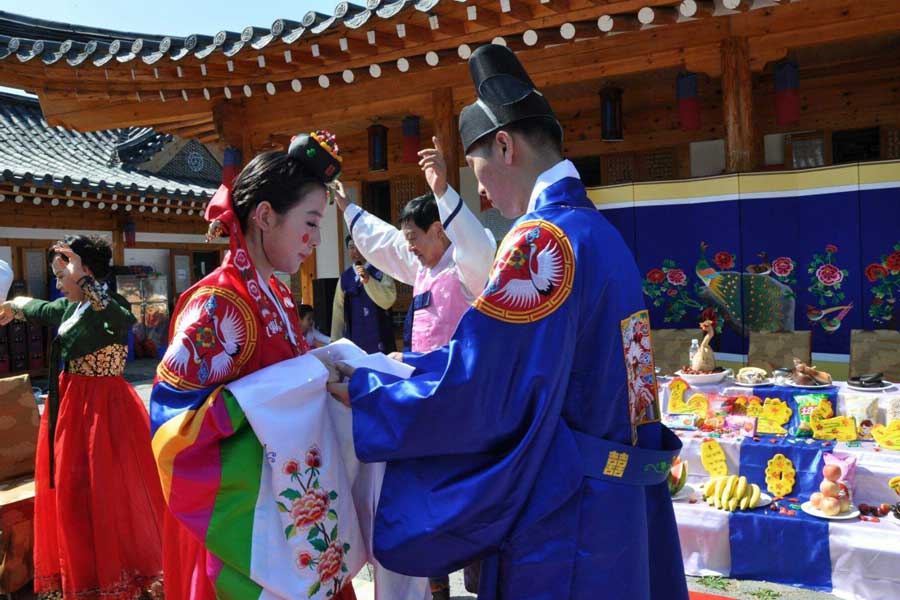Korean ethnic group is one of the main ethnic groups in East Asia. The term “Korean ethnic group” refers specifically to the Korean ethnic group in China, a Chinese national with the People’s Republic of China nationality, and a non-Chinese ethnic Korean living in a non-Chinese area that does not claim to be a “Korean ethnic”. The Korean ethnic group is mainly distributed in Jilin, Liaoning and Heilongjiang Provinces in northeastern China. A few are scattered in Inner Mongolia and some cities in the interior. The Korean ethnic group has its own written and spoken language, which is generally considered to belong to the Altaic family. The values of the Korean ethnic group have obvious Confucian characteristics and are greatly influenced by the Han ancient culture in the central plains. According to the 2021 census, the ethnic Korean population was 1,702,479.
Apparel of the Korean ethnic group
Korean ethnic groups preferred plain white clothing, so they’re known as the “white people”. Their clothing is characterized by a diagonal skirt, without buttons, and long cloth tied with a belt. Women traditionally wear short garments, long skirts, and slanted skirts, bowing with a long cloth strap below the right shoulder. Men’s clothing consists of a short jacket, extra waistcoat, and baggy trousers, and they wear a long robe with a ribbon knot when going out. Nowadays it has changed to Western-style uniforms or suits.
Food and Drink
The Korean ethnic group mainly lives in the three provinces of northeastern China. The staple food is rice and millet. They like to eat “spicy cabbage”, rice cake, cold noodles, big sauce soup, chili, and so on. The most famous ones are rice cake, cold noodles, and pickles. They often eat mutton shashlik and pork belly.
Traditional Festivals
The Korean ethnic group’s festivals are basically the same as the Han ones. The first day of the year is the Spring Festival for Koreans, one of the most festive days for the Korean ethnic group. Spring Festival is the biggest festival for the Korean ethnic group. On the first day of the first month of the first lunar month, they worshipped ancestors first, then children wore gorgeous clothes to pay a New Year to the older. On the 15th day of the first lunar month, all ethnic Koreans, men and women, young and old, eat “rice with five grains” and drink “appetizing wine”.
Taboos of the Korean ethnic group
The younger generation cannot drink or smoke in front of their elders. When smoking, young people should not borrow fire from old people. They should also not give fire. Otherwise, it’s considered disrespectful to do so.
When walking with the elderly, the young must walk behind the elderly. If something urgent needs to be done, he should respectfully explain his reasons to the elderly. When an elder comes to you on the way, the young man should stand respectfully by the roadside and give way.
Not killing dogs or eating dog meat during weddings and funerals.
The food should be given to the oldest man first, and the table shall be set for him, and the family shall not eat until the old man has raised his spoon and started to eat.
The Han and the Korean Ethnic Groups
Although the concept of race, the two ethnic groups are very different, from the perspective of cultural influence, the two ethnic groups have a lot in common. Both Han and Korean people are deeply influenced by Confucian culture.
Korean ethnic group and Han ethnic group belong to the same cultural circle. Primarily because of Confucianism’s influence, which gradually formed the traditional Korean folk custom. The Koreans attach great importance to the four rites of life: crown, marriage, funeral, and interment.

